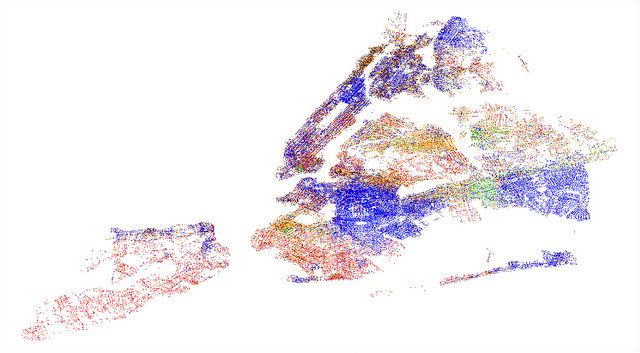Last Chance to Catch NYC's Holiday Notalgia Train
We met the voices of the NYC subway on our nostalgia ride this weekend!


Last year, the New York City Police Department carried out over half a million stop-and-frisks in the city. The issue came to forefront this past month, when a federal judge Shira Scheindlin ruled that the stop-and-frisk program was unconstitutional, saying there is solid evidence to suggest that the NYPD is unfairly targeting an African American majority.
Now, we can see this theory in visual form. As part of a project for Columbia Journalism School, a team of students were given the task of graphically mapping all 532,911 of them. Built in RStudio and using geo-location data from the New York Civil Liberties Union (NYCLU), the map shows just how widespread these controversial stops were and shows some obvious patterns on who were stopped. Blue dots indicate African Americans, while black-orange dots represent Hispanics. Red stands for Caucasians stopped and green for Asian and Pacific Islanders. The deeper the color on the map, the higher concentration of stops.
Geographically, Brooklyn and the Bronx received the most stop-and-frisks in New York City. The top neighborhoods for stops in Brooklyn included East New York, Brownsville and Bed-Stuy while Mott Havens saw the most in the Bronx. The areas receiving the fewest stops were Central Park and Turtle Bay in Manhattan and Greenpoint in Brooklyn.
With the blue and black-and-orange dots in highest concentration, the map also shows how such stops disproportionally targeted black and Hispanic New Yorkers. According to the NYCLU, black people accounted for 54.8% of stops while Latinos made up 31.8%. Conversely, only 9.7% of stops targeted whites.
The map gives a visually clear perspective on the demographic nature of stop-and-frisks throughout New York City. Damian Spleeters, the student who published the results on Twitter, was surprised at the map’s findings. “I didn’t expect to get such a clear depiction of results”, he said.
surprising. “I didn’t expect to get such a clear depiction,” Spleeters
Via Studio-X Columbia and The Verge.
Subscribe to our newsletter